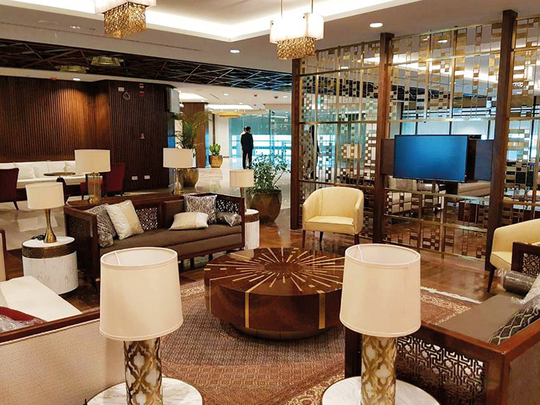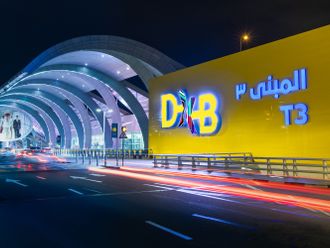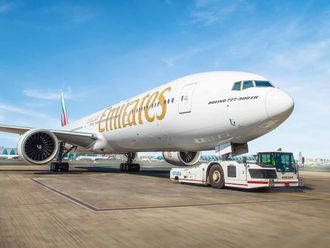
ISLAMABAD: Islamabad’s new airport, with world-standard services, modern and hi-tech facilities, will offer travellers a new gateway to Pakistan - and transform their perception about the country.
The long-awaited Islamabad International Airport (IIA) is all set to begin operations for international and domestic flights on May 3, replacing the old Benazir Bhutto International Airport in twin city of Rawalpindi, according to the Civil Aviation Authority (CAA).
Prime Minister Shahid Khaqan Abbasi is expected to formally inaugurate the airport.
The new airport is Pakistan’s largest international airport, designed for up to 15 million passengers annually in the first phase, and up to 25 million in future. Benazir Bhutto Airport in 2017 saw 4.7 million passengers.
Spread over 19 square kilometres, the new, Y-shaped airport is located 30km from the heart of Islamabad’s business centre, Blue Area. It will be Pakistan’s first airport to accommodate the double-deck Airbus A380.
Sardar Mehtab Ahmad Khan, Adviser to Prime Minister on Aviation Division, is confident that IIA “would set a new benchmark for Pakistan’s aviation industry,” ushering it in a new era of prosperity.
In an exclusive interview with Gulf News, Pakistan International Airlines (PIA) CEO Musharraf Rasool Cyan said,“The new Islamabad Airport’s modern and hi-tech facilities will enhance Pakistan’s status in the aviation world.”
He said the new airport would complement PIA’s future plans.
“We are looking forward to establish operations from the hub of Pakistan and develop it to North America, Europe and China” as PIA is in the process of expanding its fleet and improving its services.
Recently, PIA also introduced a new livery, featuring Pakistan’s national animal, Markhor, on its aircraft.
As Islamabad’s most anticipated project is almost completed, citizens are eager for the grand opening.
“The old Benazir Bhutto airport was a disappointment in terms of comfort, facilities, cleanliness and customer service. Finally, Pakistan will have an international standard modern airport” says businessman Hammad Khan, a frequent traveller.
The frustration is reasonable as the plan to construct a new airport in Islamabad was originally conceived in 1980s to cater to heavy traffic.
After years of delays due to political changes, the ground-breaking ceremony finally took place in April 2007.
Since then it has missed several completion deadlines and faced alleged mismanagement, misappropriation of funds and media scrutiny.
The airport which was scheduled to be completed by 2010 at an estimated budget of Rs37 billion (Dh1.17 billion) now costs around a whopping Rs100 billion.
“The project was completed with a total outlay of Rs105 billion” according to Senator Mushahid Hussain Syed.
Pakistan’s first greenfield (built from scratch on a new undeveloped site) aerodrome is the joint project of Capital Development Authority (CDA), National High Authority (NHA), CAA and has been designed by CPG Corporation of Singapore. The construction of the airport was undertaken by China State Construction Engineering Corporation (CSCEC), world’s largest construction company.
Main features of the Airport
The main features of airport infrastructure includes two runways, each 3.5 km long; a 28 aircraft parking apron; 15 jetties (passenger boarding bridges); 15 remote bays; a cargo apron for parking of three aircraft; main and emergency runways; taxiways; aircraft maintenance apron; and a four-level terminal building.
There will be as many as 28 escalators, six service lifts, and 24 elevators, in addition to 4 inclined and 10 horizontal travellators (moving walkways). It also features a four-star transit hotel, convention centre, duty-free shops and food court. A mini-cinema and children’s play area has also been built to help ease long layovers.
There will be 15 air-conditioned jetways, with two designated for the Airbus A380. The current Islamabad airport had no boarding bridges and only a few immigration desks, which were insufficient for handling the influx of thousands of passengers.
It will also comprise of five luggage conveyer belts, 15 bays with separate waiting lounges and modern and secured device charging stations with high-tech fingerprint recognition systems.
The airport consists of 90 check-in counters and a parking facility for 2,000 vehicles with nine exit and entry gates. The government plans to offer public transport to the airport soon.
There will also be a cargo terminal, fuel farm, air traffic control complex and a fully-functional modern fire fighting station and rescue facilities. Besides all other facilities, 18 water tube-wells and three water dams have been built for availability of clean drinking water.
Around 1200 Airport Security Force personnel are expected to be deployed at 85 security towers to ensure safety at the airport with advanced security management systems and two bomb pit facilities.
“The new airport is a boon for both airlines and passengers because of the crowded location of the current airport sometimes forced airlines to circle the airport waiting for a landing slot” said an aviation official.
Design and architecture
The airport has contemporary design inspired by traditional Islamic geometric patterns. Environmentally sustainable design strategies have been employed with the use of day light and sun shading to reduce energy use. The interior texture of granite flooring has been used to ensure dust-free air quality.
Tourism
With the launch of new airport, Pakistan is all set to welcome foreign tourists who primarily come to visit the scenic northern areas or to participate in religious festivals.
“This airport was long overdue. After all, Islamabad airport is the first impression of the country for foreigners who come to scale Pakistan’s high mountains and witness the beauty of northern areas,” said Altaf Ahmad, a tour guide from Gilgit city, who frequently visits Islamabad to receive foreign tourists.
Pakistan Tourism Development Corporation (PTDC) has announced to establish a modern Tourist Information Centre at the new airport, said PTDC managing director Chaudhry Abdul Ghafoor Khan.
Pakistan is not only rich in Islamic heritage but also a gateway to sacred sites for other religions especially Buddhists and Sikhs. Many holy sites for Sikhs such as the birthplace of the founder of Sikh religion in Nankana Saheb district, and Gurdwara (monastery) Punja sahib are in Pakistan.
Similarly, the monastery Takht-i-Bhai (Throne of Origins) and the 3,000 year old Taxila of the Gandhara Valley Civilisation are revered sites for Buddhists and attract pilgrims from China, Korea, Thailand, Malaysia, Japan and Sri Lanka.
“We hope to see an increase in religious tourism after the opening of the new airport,” Khan said.
Through the new airport, Pakistan’s national flag carrier PIA and private airlines such as Shaheen Air, Air Blue and Serene Air as well as international Emirates, Gulf Air, Thai Airways and Turkish Airlines will connect Islamabad to world’s top destinations, making Pakistan a major hub for trade and tourism.
Key highlights:
1. 28 aircraft parking stands
2. 15 jetways
3. 90 check-in counters
4. Parking for 2,000 vehicles
5. Duty-free shops
6. Four-star Hotel
7. Cinema
The airport’s 4 levels
Level 1 - international and domestic passengers’ arrival area, baggage collection and airline offices.
Level 2 - domestic arrivals and departure lounges, visitors’ gallery and immigration counters.
Level 3 - international and domestic check-ins and international departure.
Level 4 - state lounges and commercially important persons lounges.












